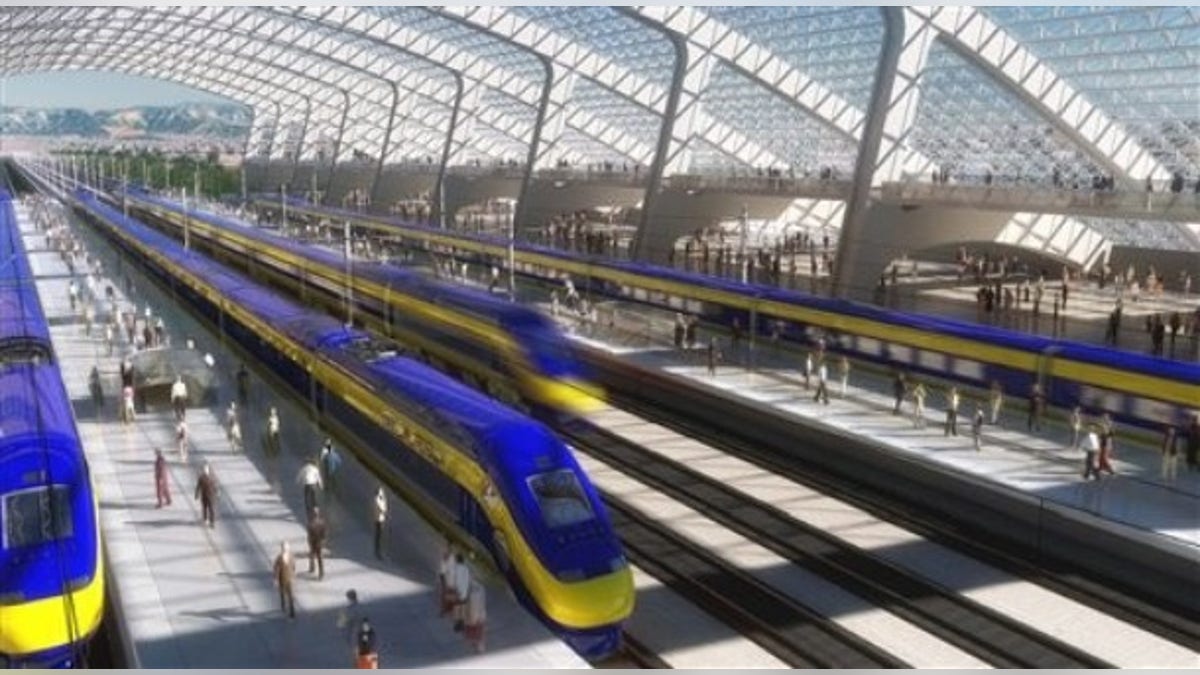
This image provided by the California High-Speed Rail Authority shows an artist's conception of a high-speed rail station in California.
SACRAMENTO, Calif. – A state-appointed panel said Tuesday that California's plan to build a high-speed rail system in the state is not financially feasible and should be placed on hold.
The report by the California High-Speed Rail Peer Review Group said the state should not authorize $2.7 billion in bonds to build the initial section of the system.
In November, the California High-Speed Rail Authority approved a plan that requests $2.7 billion in state bonds to match $3.5 billion in federal money. It would be used to build 130 miles of track between Chowchilla and Bakersfield.
The stretch of tracks would form an integral part of the line's first segment proposed to eventually span 290 miles from Bakersfield to San Jose or 300 miles from Merced to a point in the San Fernando Valley.
The report criticized the authority for failing to identify a long-term funding source for the $25 to $30 billion needed to complete either of those segments. The authority also failed to specify which of the two segments should be initiated first, according to the report.
The report also said the authority's business plan was incomplete and its staffing was inadequate to manage a large construction project.
The total cost of the project has more than doubled to $98 billion since voters approved $9 billion in bonds in 2008.
The authority responded by calling the report "deeply flawed" and misleading. It said the report's conclusions could place the $3.5 billion in federal funding at risk and jeopardize future funding. Other major infrastructure projects also don't have fully identified funding sources at the start, the authority said.
The California Labor Federation also criticized the report. It defended the rail line, saying it would generate thousands of jobs and should not be delayed.
Proponents envision that the trains, traveling at up to 220 mph, would help transform the state's economy by relieving congestion on clogged highways, allowing quicker travel between metropolitan areas and generating much-needed construction jobs.
But last month, California's high-speed rail officials backed off claims that the bullet train would create more than 1 million jobs.
And in November, the state's legislative analyst said California's plan for a $98 billion high-speed rail system does not comply with some parts of the 2008 ballot measure voters approved to provide the seed money. The analyst said the stretch would not be a stand-alone operating segment of the high-speed rail line, as required by Proposition 1A.
Some lawmakers in both major parties now say the Legislature should rethink spending voter-approved bonds toward the high-speed rail system.
State Sen. Doug LaMalfa, R- Richvale, praised the review group's recommendation. He said the state couldn't afford high-speed rail and its actual costs would far exceed any benefits.
The senator said he would introduce a bill to put the project's funding on the ballot and let voters have another opportunity to weigh in.
The rail line would be built in two phases. The first would extend from San Francisco to Los Angeles and Anaheim; the second would extend the line to Sacramento in the north and San Diego in the south.




